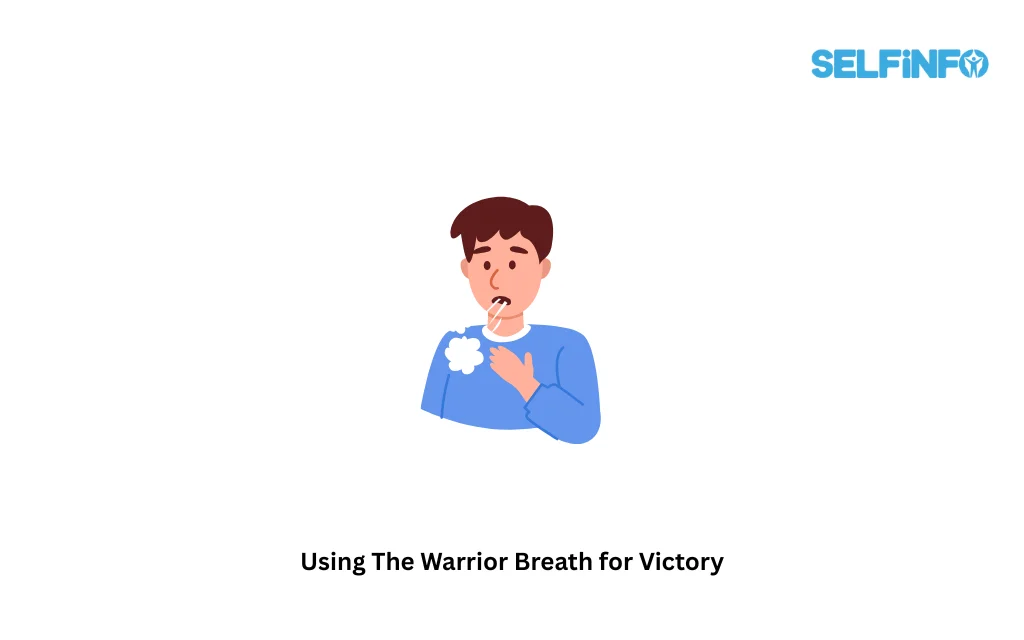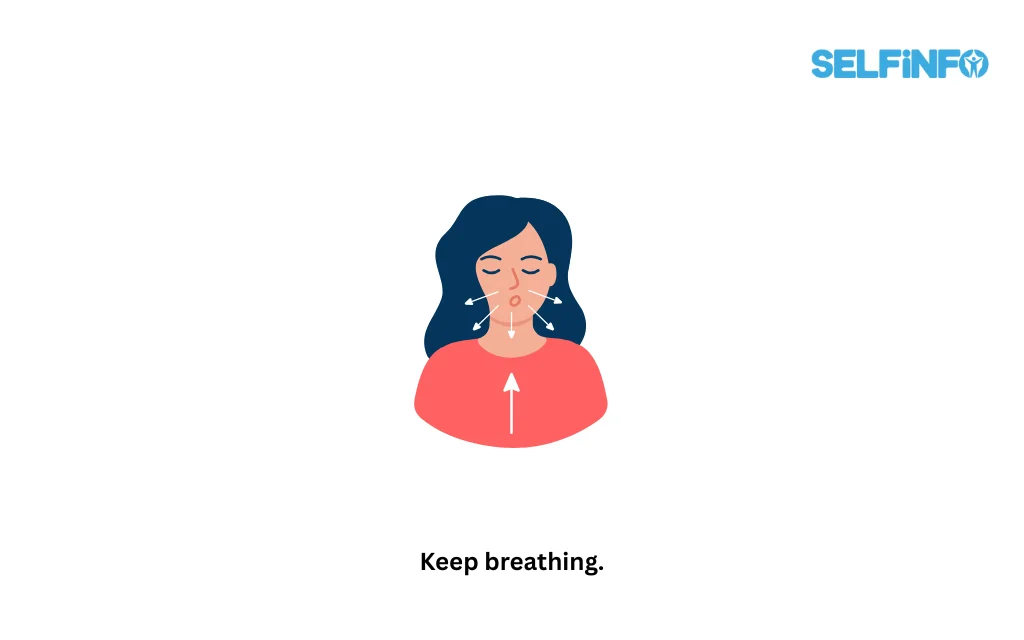Panic attacks and fear have gripped my body and mind for most of my life, as I’ve battled PTSD and chronic anxiety.
On my worse days, I would have trouble breathing and felt my throat and chest tighten.
I would lie in the fetal position during a chronic panic attack, unable to move or stop breathing.
I would numb myself with food and drink, self-medicate, or watch mindlessly on TV to get by on my better days.
In addition to fighting anxiety, I was also denying the existence of a low-grade, high-functioning depression that hung over me like an ominous storm cloud from the moment I opened my eyes in the morning until I eventually went to sleep at night.
I made every effort to get rid of it and get past the internal conflict that kept churning.
However, I was unable to.
I was unable to halt it or make it disappear.
Not in the long run, anyhow.
I tried a few things that gave me short-term comfort or relief, but ultimately the overwhelm, despair, defeat, and dread would return.
I felt confined. Powerless. Unmanageable. I doubt that I will ever be able to live anything except this wretched life.
You could say it runs in my family because I have a lengthy history of family members who have struggled with addiction and mental illness.
I grew up seeing my mother battle severe depression, bipolar disorder, and substance abuse issues, which ultimately caused her to have multiple meltdowns and even try suicide.
I was, of course, a nervous, scared little girl who frequently felt extremely dangerous.
Early on, my developing brain realized that I needed to be on alert all the time to survive.
My neurological system grew used to being in “fight-freeze-or-flight” state all the time.
I looked for activities that would give me a sense of control over my life and myself as a coping mechanism, even if that meant playing small, numbing out, or diverting my attention.

How I Found Peace and Courage Through Yogic Breathing
Things did not truly alter for me until I started on the yogic path.
During one of my worst moments, I looked to yoga for answers and a natural way to cope with my anxiety.
This old technique, which taught me that I am not my past or my origins, gave me comfort.
My yoga practice helped me realize that I did not have to let my fear define who I was.
I discovered that, even in the middle of a full-blown panic attack, I could overcome my worries.
By learning to manage my breathing, I might learn to calm my racing mind and hyper-aroused body.
Pranayama, often known as yogic breathing, is one of the fundamental principles of yoga.
“The mind is unstable when the breath veers. However, the mind will also become quiet when the breathing is slowed. The Pradipika of Hatha Yoga
Using these strategies during an attack was not simple, but with time, effort, practice, and consistency, my panic attacks started to change.
They relaxed their control on me.
It has been nearly three years since my last panic attack.
How did I do it, then?
It required all of my strength to summon my inner yogic warrior and prepare for the impending internal conflict whenever I felt the assault coming.
As I gasped for air, I would repeatedly tell myself, “I am not my fear; I am not this terror.”
I kept telling myself that sometimes I believed myself and other times I didn’t.
“I am not this panic; I am not my fear.”
Using The Warrior Breath for Victory

Every time I wanted to quiet my racing body and mind, I employed a variety of yogic breathing practices.
One became the standard because it worked so well.
Ujjayi Breathing, sometimes referred to as Warrior Breath or Victorious Breath, is a scientifically supported method.
There are numerous mental, physical, and emotional advantages of uijayi breathing. This method of breathing is recognized to:
- Develop resilience to efficiently manage stress, anxiety, anger, and depression.
- Control your feelings
- Reduce the stress reaction and stabilize the neurological system
- Boost the reaction to rest, digestion, relaxation, and regeneration
- Control your blood sugar levels.
- Reduce your cholesterol
- Boost the quality and cycle of your sleep
- Boost your digestion
- Increase your immunity
- Boost the function of the respiratory system
- When you practice Ujjayi, you softly constrict the back of your neck to produce a sound that resembles the waves of the ocean or the hiss of an animal.
It sounds a lot like Star Wars’ Darth Vader.
Ujjayi has been shown in numerous studies to be useful in treating PTSD. It has been applied to victims of natural disasters and Vietnam veterans.
Ujjayi can assist you in triggering the calming, restorative reaction while deactivating your body’s panic response when combined with deep abdominal breathing.
This breathing exercise’s wave-like noises can also give you some much-needed calm in the midst of a storm.
You can experience a wave of peaceful groundedness and a much-needed sense of control after just a few minutes of Ujjayi breathing.
5 Simple Steps to Take During Your Next Panic Attack
1. Find solitude.
For me, at least, this was instinctive during a panic attack. It is crucial to position oneself for success at this crucial period, so avoid the crowds and find a peaceful, secure location. “I am not my fear; I am not this terror,” remind yourself.
2. Control your breath.
Your body and mind may feel totally uncontrollable during a panic attack. Because of your tendency to breathe quickly, shallowly, and frantically, it is critical to take all the necessary steps to recover control over your breathing. Intentionally slow down your breathing.
To do Ujjayi, follow these steps:
Position and hold the tip of your tongue in the middle of the roof of your mouth.
Use only your nose to breathe.
Exhale completely while keeping your mouth shut.
Breathe like the ocean by taking six slow breaths and letting them out, while tightening the back of your throat.
Engage your lower abdomen by stretching it outwards when you inhale.
Bring your lower abdomen inward toward your spine to contract it as you exhale.
Until your body changes and you are no longer having trouble keeping up, keep repeating this breathing pattern: inhale for six, exhale for six. This should take at least three minutes.
3. Breathe with awareness.

After using Ujjayi to moderate your breathing rate, begin to pay attention to your breathing. As the air enters and exits your nose, focus all of your attention on your breathing.
Pay close attention to your breathing. Pay attention to your breathing. Is it lengthy? Give it a long time. Is it brief? Keep it brief. Bring your thoughts back to your breathing if they stray. Pay close attention and follow the breath. The more you do this great brain exercise, the easier it will become.
4. Name it.
You are prepared to identify and label what is happening to you once you have established a connection with your breath and raised awareness of it.
According to a recent UCLA study, we can reduce the strength of our emotions just by consciously acknowledging or classifying them. When participants named feelings, the study examined their brain scans and discovered that the area of the brain linked to fear and reactionary emotional reactions actually became less active. So do not be afraid to express how you are feeling. Give names to fear, panic, dread, fury, fright, anxiety, worry, resentment, and so on.
5. Keep breathing.

Continue to create the sound of the ocean with each inhalation and exhalation, and discover your rhythm. As you breathe the waves through you, visualize the waves ebbing and flowing all around you. Sense the waves inside of you. You will dispel panic and awaken inner peace the more you flow with the waves.
